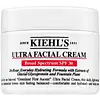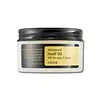What's inside
What's inside
 Key Ingredients
Key Ingredients

 Benefits
Benefits

 Concerns
Concerns

 Ingredients Side-by-side
Ingredients Side-by-side

Water
Skin ConditioningGlycerin
HumectantOctocrylene
UV AbsorberHomosalate
Skin ConditioningEthylhexyl Salicylate
UV AbsorberSqualane
EmollientButyl Methoxydibenzoylmethane
UV AbsorberDimethicone
EmollientPEG-100 Stearate
Glyceryl Stearate
EmollientSilica
AbrasiveOctyldodecanol
EmollientStearic Acid
CleansingPhenoxyethanol
PreservativePalmitic Acid
EmollientTocopherol
AntioxidantDicaprylyl Carbonate
EmollientSteareth-100
Gel FormingAcrylates/C10-30 Alkyl Acrylate Crosspolymer
Emulsion StabilisingOphiopogon Japonicus Root Extract
Skin ConditioningCarbomer
Emulsion StabilisingChlorphenesin
AntimicrobialCapryloyl Salicylic Acid
ExfoliatingCaprylyl Glycol
EmollientXanthan Gum
EmulsifyingDimethicone/Vinyl Dimethicone Crosspolymer
Skin ConditioningDisodium EDTA
Sodium Hydroxide
BufferingCitrus Aurantium Dulcis Peel Oil
MaskingLimonene
PerfumingEctoin
Skin ConditioningHydrolyzed Hyaluronic Acid
HumectantMyristic Acid
CleansingMentha Piperita Oil
MaskingPseudoalteromonas Ferment Extract
HumectantEthylhexylglycerin
Skin ConditioningLinalool
PerfumingSalicylic Acid
MaskingWater, Glycerin, Octocrylene, Homosalate, Ethylhexyl Salicylate, Squalane, Butyl Methoxydibenzoylmethane, Dimethicone, PEG-100 Stearate, Glyceryl Stearate, Silica, Octyldodecanol, Stearic Acid, Phenoxyethanol, Palmitic Acid, Tocopherol, Dicaprylyl Carbonate, Steareth-100, Acrylates/C10-30 Alkyl Acrylate Crosspolymer, Ophiopogon Japonicus Root Extract, Carbomer, Chlorphenesin, Capryloyl Salicylic Acid, Caprylyl Glycol, Xanthan Gum, Dimethicone/Vinyl Dimethicone Crosspolymer, Disodium EDTA, Sodium Hydroxide, Citrus Aurantium Dulcis Peel Oil, Limonene, Ectoin, Hydrolyzed Hyaluronic Acid, Myristic Acid, Mentha Piperita Oil, Pseudoalteromonas Ferment Extract, Ethylhexylglycerin, Linalool, Salicylic Acid
Snail Secretion Filtrate
Skin ConditioningBetaine
HumectantCaprylic/Capric Triglyceride
MaskingButylene Glycol
HumectantCetearyl Olivate
Sorbitan Olivate
EmulsifyingCetearyl Alcohol
EmollientCarbomer
Emulsion StabilisingEthyl Hexanediol
SolventPhenoxyethanol
PreservativeArginine
MaskingDimethicone
EmollientSodium Polyacrylate
AbsorbentSodium Hyaluronate
HumectantAllantoin
Skin ConditioningPalmitic Acid
EmollientPanthenol
Skin ConditioningXanthan Gum
EmulsifyingStearic Acid
CleansingAdenosine
Skin ConditioningWater
Skin ConditioningMyristic Acid
CleansingSnail Secretion Filtrate, Betaine, Caprylic/Capric Triglyceride, Butylene Glycol, Cetearyl Olivate, Sorbitan Olivate, Cetearyl Alcohol, Carbomer, Ethyl Hexanediol, Phenoxyethanol, Arginine, Dimethicone, Sodium Polyacrylate, Sodium Hyaluronate, Allantoin, Palmitic Acid, Panthenol, Xanthan Gum, Stearic Acid, Adenosine, Water, Myristic Acid
 Reviews
Reviews

Ingredients Explained
These ingredients are found in both products.
Ingredients higher up in an ingredient list are typically present in a larger amount.
Carbomer is a polymer of acrylic acid. Its main role is to create a gel consistency.
A high amount of carbomer can cause pilling or balling up of products. Don't worry, most products contain 1% or less of carbomer.
Dimethicone is a type of synthetic silicone created from natural materials such as quartz.
What it does:
Dimethicone comes in different viscosities:
Depending on the viscosity, dimethicone has different properties.
Ingredients lists don't always show which type is used, so we recommend reaching out to the brand if you have questions about the viscosity.
This ingredient is unlikely to cause irritation because it does not get absorbed into skin. However, people with silicone allergies should be careful about using this ingredient.
Note: Dimethicone may contribute to pilling. This is because it is not oil or water soluble, so pilling may occur when layered with products. When mixed with heavy oils in a formula, the outcome is also quite greasy.
Learn more about DimethiconeMyristic Acid is a saturated fatty acid. It is naturally found in milk fat. Other sources include palm oil, coconut oil, and butter fat.
Myristic Acid is an emulsifer and cleanser. As an emulsifer, it stabilizes a product by preventing ingredients from separating. Myristic Acid helps clean your skin by acting as a surfactant. It tends to gather oil and dirt on your skin to be easily rinsed away.
One study from 2021 found Myristic Acid to have anti-inflammatory properties.
Learn more about Myristic AcidPalmitic Acid is a fatty acid naturally found in our skin and in many plant and animal sources. In cosmetics, it is usually derived from palm oil. It serves many purposes in skincare, acting as a cleanser, emollient, and emulsifier.
As an emollient, palmitic acid helps soften and smooth the skin by preventing water loss. In cleansers, it helps remove oil and dirt while creating foam.
Its emulsifying properties help stabilize products by keeping water and oil-based ingredients from separating.
This may not be suitable for fungal acne-prone skin, as fatty acids like this can sometimes trigger breakouts in sensitive individuals.
Learn more about Palmitic AcidPhenoxyethanol is a preservative that has germicide, antimicrobial, and aromatic properties. Studies show that phenoxyethanol can prevent microbial growth. By itself, it has a scent that is similar to that of a rose.
It's often used in formulations along with Caprylyl Glycol to preserve the shelf life of products.
Stearic Acid is a fatty acid. It is an emollient, emulsifier, and texture enhancer.
As an emollient, stearic acid helps soften skin. It aids the skin's protective barrier by preventing water loss. It also provides a gentle cleansing effect without stripping away natural oils.
Stearic acid may also be used to enhance the texture of products. It can add volume and stabilize ingredients such as water and oil. This can help water and oil ingredients from separating.
Sources of stearic acid include animal or vegetable fats/oils such as coconut or shea. It can be naturally found in butter, cocoa butter, shea butter, vegetable fats, and animal tallow.
This ingredient may not be Malassezia folliculitis, or fungal-acne safe.
Learn more about Stearic AcidWater. It's the most common cosmetic ingredient of all. You'll usually see it at the top of ingredient lists, meaning that it makes up the largest part of the product.
So why is it so popular? Water most often acts as a solvent - this means that it helps dissolve other ingredients into the formulation.
You'll also recognize water as that liquid we all need to stay alive. If you see this, drink a glass of water. Stay hydrated!
Learn more about WaterXanthan gum is used as a stabilizer and thickener within cosmetic products. It helps give products a sticky, thick feeling - preventing them from being too runny.
On the technical side of things, xanthan gum is a polysaccharide - a combination consisting of multiple sugar molecules bonded together.
Xanthan gum is a pretty common and great ingredient. It is a natural, non-toxic, non-irritating ingredient that is also commonly used in food products.
Learn more about Xanthan Gum